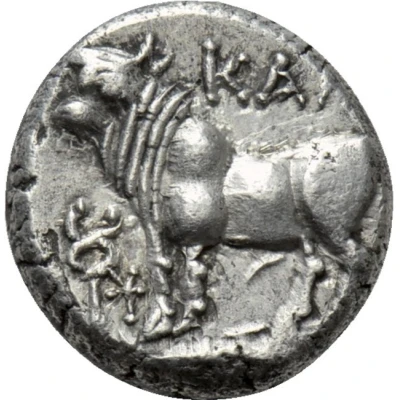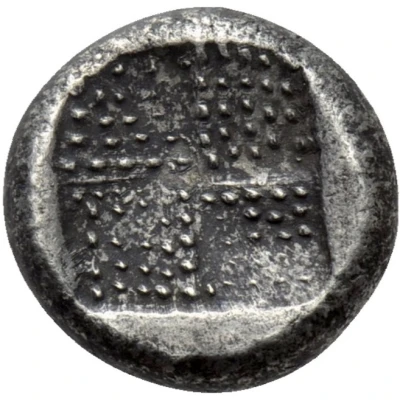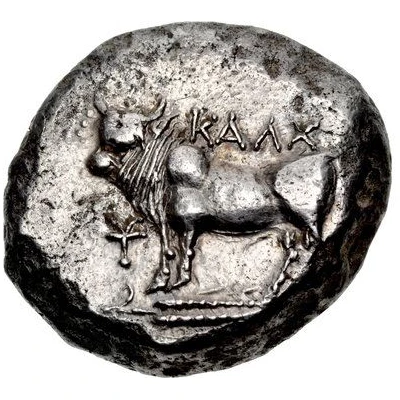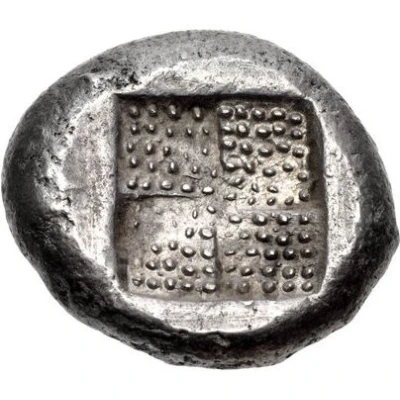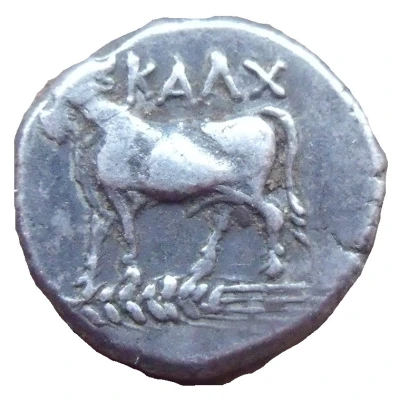
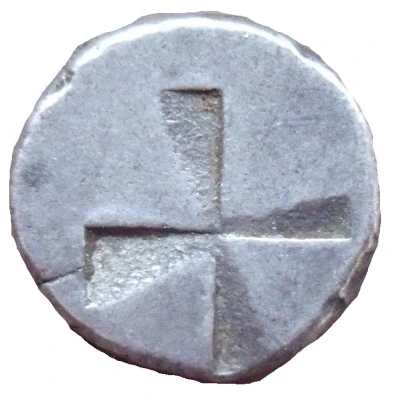

© KAISERKILLERfr08
Drachm 340 BC - 320 BC
| Silver | 5.28 g | 17 mm |
| Issuer | Kalchedon (Bithynia) |
|---|---|
| Type | Standard circulation coin |
| Years | 340 BC - 320 BC |
| Value | Drachm (1) |
| Currency | Drachm |
| Composition | Silver |
| Weight | 5.28 g |
| Diameter | 17 mm |
| Thickness | 2 mm |
| Shape | Round (irregular) |
| Technique | Hammered |
| Demonetized | Yes |
| Updated | 2024-10-09 |
| Numista | N#73304 |
|---|---|
| Rarity index | 94% |
Reverse
Hollow square quadripartite in the shape of mill wings.
Edge
Rough
Comment
In 340 BC, the standard used by Chalcedon, a city located on the shore opposite Byzantion (Byzantium), changed: the Persian standard replaced the lighter Rhodian.In Persian coinage, the equivalent of the drachma is the shekel, which explains why this currency is sometimes referred to as the shekel.
Interesting fact
The Drachm coin from Kalchedon (Bithynia) was used as a form of currency in the ancient Greek city of Kalchedon, which was located in the region of Bithynia in modern-day Turkey. The coin features an image of a mythical creature called a Griffin, which was a symbol of protection and strength in ancient Greek mythology. The Griffin was often depicted as a creature with the body of a lion and the head and wings of an eagle, and it was believed to have the power to protect against evil spirits and guard treasure. The image of the Griffin on the Drachm coin may have been intended to convey the idea of protection and security for the people who used it as currency.
